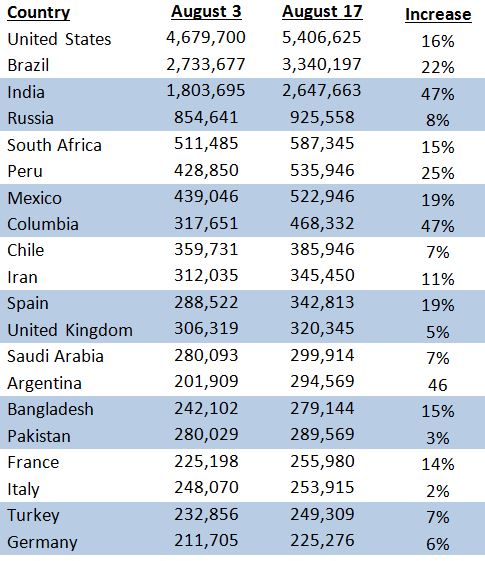College and universities that have allowed students on campus find themselves wrestling with COVID-19 and the party culture as kids hang out and party without masks or social distancing. Why does this surprise anyone?
Imagine being 18 or 20-years-old and suddenly on your own after being locked in your parent’s house for the past five months. Of course you’re going to rebel and break the rules! And chances are, if these students get COVID-19, the vast majority are going to have little or no symptoms and will be just fine. The real danger is probably to their professors, administrators, and those with suppressed immune systems.
COVID-19 is becoming a disease where the youth spread it and the elderly die from it. If I worked at a college or school and I was over 60, I’d think this was a great year to take a sabbatical or maybe consider a move to emeritus status and retire. But the young? There’s really no stopping them from acting their age. We should just be glad they aren’t out protesting, looting, and joining Antifa.
There is clear evidence that parties and other indoor gatherings can be super-spreader events that infect the majority many attendees, college age or otherwise. This is why places like Florida, California, and Italy have closed night clubs and bars. But even banning these activities just drives them underground, it doesn’t stop them entirely.
It will be interesting to see if this activity shuts down in-person college classes and sends kids home or if the colleges and universities can weather a storm of cases.
By the Numbers
We’re seeing the weekend effect in today’s numbers as both cases and deaths in the U.S. dropped well below their 7-day moving averages. There were 42,303 new cases reported in the past 24 hours, bringing the total to 5.41 million. The U.S. has a total of 169,910 deaths with 516 deaths reported since yesterday
Globally, there are 21.71 million cases and 775,989 deaths reported. There has been some growth in unexpected countries this month. Here is a look at how the 20 countries with the highest infections performed over the past two weeks:

First, let me mention that the data provided by Johns Hopkins may be different than other sources. For example, their numbers for France are about 35,000 more than the EU reports. We don’t know why, but we are sticking with the Johns Hopkins data for consistency.
Second, it is pretty clear here that despite all the concern about growing cases in Italy, it is Spain that is the real problem in Western Europe with cases growing there at a pace that exceeds the U.S.
With growth in excess of 20 percent over the past two weeks, India, Columbia, Peru, and Brazil continue to be the global hot spots.
Read It’s Getting Bad Out There for a recap of how COVID-19 i changing our world.







